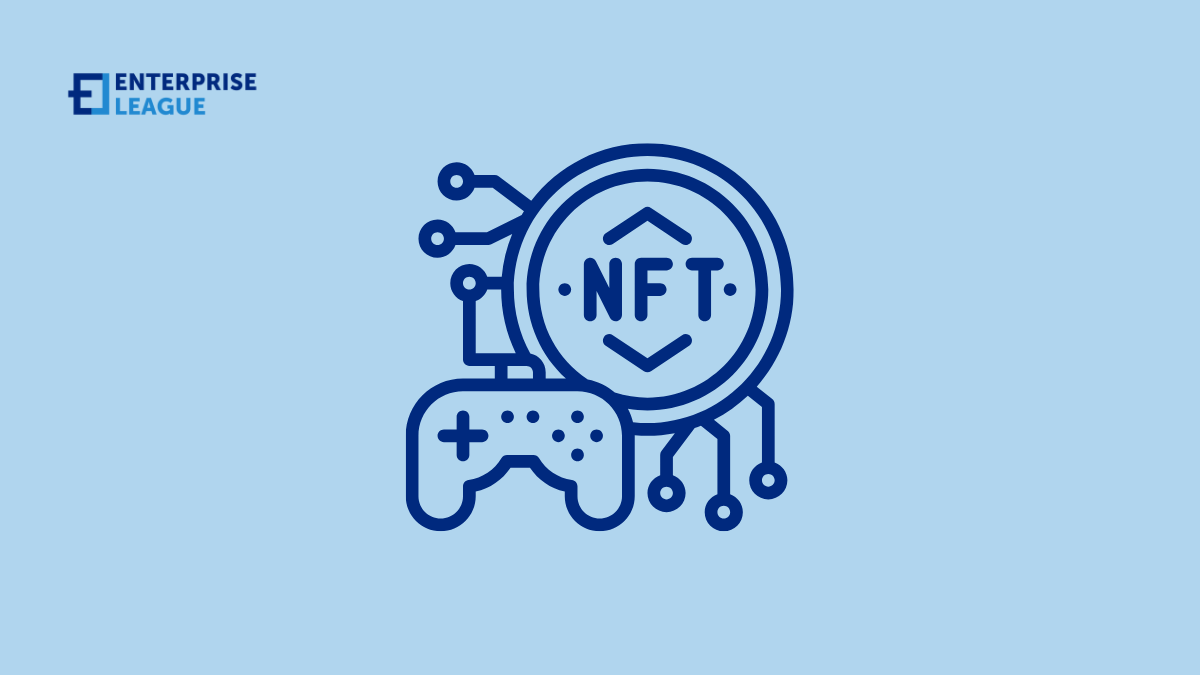When blockchain technology crashed into the gaming industry, everything changed. What was once pure entertainment suddenly offered investment opportunities through digital ownership, and NFT gaming startups rushed in to stake their claims. This isn’t some niche experiment since experts predict this market will reach 68.89 USD billion by 2034. Regular games keep all your items locked up, where you can’t do anything with them outside the game.
But NFT games? You actually own your stuff. You can sell it, trade it, or just show it off, and that’s why everyone from casual gamers to serious investors is trying to figure this whole thing out. People like the idea of playing games and maybe making some money too, but unfortunately, most folks still don’t really get how these business models work or why they’re such a big deal. That’s why we did our homework and put our efforts into explaining each step of how the NFT gaming business model works.
How NFT gaming works
NFT gaming takes what we love about video games and adds something new, ownership that goes beyond the game itself. These games use blockchain technology, basically a secure digital ledger, to record who owns what without needing a middleman. When you earn or buy something in these games, it’s yours to keep, trade, or sell, even outside the game environment. The whole system runs on what developers call smart contracts, which are just automated rules that execute exactly as programmed, with no chance of manipulation. These contracts handle all the behind-the-scenes stuff, like creating new items when certain conditions are met or making sure nobody can copy rare items.
What gets people excited is the play-to-earn aspect, where your gaming skills actually translate to real value. Maybe you’ll earn tokens for defeating monsters, building impressive structures, or discovering new territories. The rarer or more useful an item is, the more other players might pay for it. Some folks have turned this into a genuine income stream, treating gaming less like a hobby and more like a job. If the game shuts down tomorrow, you’d still own all your items and could potentially use them somewhere else or just sell them off. That’s a big change from traditional gaming, where spending hundreds on in-game purchases means nothing if the company pulls the plug.
Core principles of an NFT gaming business model
NFT gaming business models create value through digital scarcity, something previously impossible in virtual worlds where items could be infinitely duplicated. These games thrive on community ownership, with players becoming stakeholders through governance tokens that give them voting rights on the game’s future. This transforms the player-developer relationship into something more collaborative.
The economic balance requires constant attention, carefully managing how tokens enter and exit the system to maintain a healthy in-game economy. Too many tokens lead to inflation, too few kill player motivation. Revenue comes primarily from transaction fees, land sales, and percentages of player trades rather than box sales or subscriptions. This ties the developers’ success directly to maintaining a vibrant, active economy where players keep trading and investing.
Building the right NFT gaming business
Creating a successful NFT gaming business isn’t just about jumping on the blockchain bandwagon, it requires thoughtful design and implementation. Here are the key elements to consider:
- Game-first philosophy: The most sustainable NFT games focus on being fun to play first, with economic benefits second. If your game isn’t enjoyable, players won’t stick around regardless of potential earnings.
- Sustainable tokenomics: Your game economy needs careful modeling before launch. Consider token supplies, inflation rates, and value sinks that remove currency from circulation.
- Community building: Successful NFT games cultivate active communities that contribute to development and governance. Early supporters often become your most passionate advocates.
- Legal compliance: Navigate the complex regulatory landscape around cryptocurrencies and digital assets in different regions. What’s permitted in one country might be restricted in another.
- Security measures: Protect your players’ assets through rigorous smart contract audits and security protocols. A single exploit can destroy player trust permanently.
- Long-term roadmap: Plan beyond the initial hype. How will your game evolve over years, not just months? Players investing in your ecosystem want to see a vision for the future.
- Accessibility balance: Make your game approachable for newcomers while still rewarding dedicated players. High entry barriers limit growth potential.
Keep in mind that the NFT gaming space is still in its early days, so flexibility and willingness to adapt based on player feedback will ultimately separate successful projects from those that fade after the initial hype.
NFT gaming business model vs. Traditional business model
The differences between NFT and traditional gaming models reveal why blockchain gaming is gaining momentum:
- Asset ownership: Traditional games offer temporary access, while NFT games provide true ownership of tradable digital assets.
- Revenue generation: Traditional models rely on game sales and DLC, whereas NFT games earn through marketplace fees and ongoing royalties from player trades.
- Player economics: Traditional gaming is purely consumptive spending, while NFT gaming enables potential investment returns on purchased assets.
- Funding methods: Traditional games need publisher backing or significant upfront capital, but NFT projects can raise funds through token or NFT pre-sales.
- Governance structure: Traditional games keep decision-making centralized, while many NFT games distribute governance power to token holders.
- Economic boundaries: Traditional games maintain closed economies, but NFT games create open marketplaces connected to wider crypto ecosystems.
When you step back and look at it, this changes everything about what gaming means, it’s no longer just about having fun but also about building value that extends beyond the game itself.
Conclusion
As we look ahead, these blockchain-powered gaming models will likely split into two paths: some becoming sophisticated investment platforms that happen to be games, others focusing on using NFT ownership to enhance traditional gaming experiences without the financial speculation. The technology enables new possibilities, but human desires for fun, community, achievement, and value will determine which NFT gaming business models thrive.
More must-read stories from Enterprise League:
- Learn how to deal with being proffesionally ghosted like an expert.
- Implement a CRM strategy for your business using this guide.
- Innovative and profitable business ideas with no employees.
- Find out all the things that make messy people smarter.
- How to ask for a deposit in a contract without being awkward or losing a client.
Related Articles
Generate More Leads: Essential Marketing and Advertising Tips for Home Service Pros
The home improvement and gardening industries face unique challenges such as seasonal demand fluctuations, labor shortages, and rising costs. For business owners and marketing managers in the Chicago metropolitan and Midwest regions, adopting a strategic marketing...
What’s the Best Type of Cantilever Shade Structure for Large Lots? 6 Options for Business Owners
In the current commercial environment, cantilever shade structures for outdoor spaces are becoming essential elements, transforming large lots into inviting environments. These innovative designs provide much-needed shade while also enhancing the aesthetic appeal of...
Can You Combine Snow Removal and Janitorial Services Under One Provider? Here’s What You Should Know
When scheduling winter ice removal, coordinating custodial teams and ensuring consistent service quality, managing several vendors often leads to inefficiency, miscommunication and added costs. Business owners often wonder if they can combine snow removal and...
Generate More Leads: Essential Marketing and Advertising Tips for Home Service Pros
The home improvement and gardening industries face unique challenges such as seasonal demand fluctuations, labor shortages, and rising costs. For business owners and marketing managers in the Chicago metropolitan and Midwest regions, adopting a strategic marketing...
What’s the Best Type of Cantilever Shade Structure for Large Lots? 6 Options for Business Owners
In the current commercial environment, cantilever shade structures for outdoor spaces are becoming essential elements, transforming large lots into inviting environments. These innovative designs provide much-needed shade while also enhancing the aesthetic appeal of...






